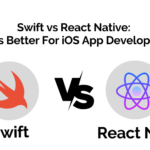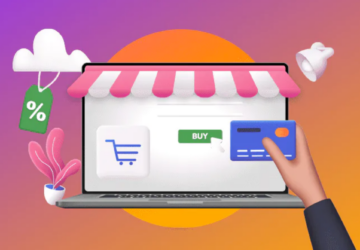What is Mobile Marketing?
The technique of advertising products, and services, using mobile devices like smartphones, tablets, etc is known as mobile app marketing. It involves a variety of strategies and techniques aimed at reaching clients through their mobile devices, including mobile applications, SMS (text message), social media, email, and websites that are mobile-friendly.
With the widespread adoption of smartphones, mobile app marketing has become an integral part of every business’s marketing strategy. Businesses can reach customers in real-time, engage with them more personally, and offer a flawless user experience by utilizing the potential of mobile devices.
When it comes to mobile marketing, two dominant operating systems are Android and iOS. While both Android and iOS are popular and widely used, there are significant differences between the two in terms of how they drive mobile marketing.
In addition to advertising, mobile marketing platform can help businesses engage with their mobile app users through push notifications, in-app messages, and other types of messaging. These platforms provide tools for creating and managing these messages, as well as analytics to track their effectiveness.
In this blog, we will explore the differences between mobile marketing on Android and iOS.
- App Store Optimization (ASO)
App Store Optimization (ASO) is the process of optimizing mobile apps to rank higher in the app store search results. Android and iOS have different approaches to ASO. On Android, developers have more control over the metadata they can include in their app listings. This includes the title, description, and keywords. As a result, developers can optimize their apps for specific keywords and phrases, making them more discoverable.
On the other hand, Apple’s App Store algorithm considers several factors while ranking apps. These include the number of downloads, ratings, and reviews. Developers have less control over the metadata they can include in their app listings. The algorithm also considers factors like user retention and engagement. As a result, it can be more challenging to optimize an app for the App Store.
- Push Notifications
Push notifications are an essential tool for mobile marketers. They can be used to notify users about new products, promotions, or events. On Android, push notifications can be customized
based on the user’s actions, such as opening an app or clicking a button. This level of customization allows marketers to target specific user segments with personalized messages.
Apple’s push notification system is more restrictive. It does not allow marketers to send push notifications based on user actions. Instead, notifications are sent based on predefined triggers, such as time of day or location. While this can be limiting for marketers, it ensures that users are not overwhelmed with irrelevant notifications.
- Advertising
Both Android and iOS offer advertising options for mobile marketers. Google’s AdMob is a popular advertising platform for Android, while Apple’s iAd is available on iOS. AdMob allows developers to monetize their apps through ads, while iAd allows marketers to target users based on demographics, interests, and location.
However, Apple’s recent privacy changes have had a significant impact on mobile advertising on iOS. In the latest version of iOS, users can opt out of tracking, making it more challenging to target ads to specific users. Android, on the other hand, has not implemented any such privacy changes.
- In-App Purchases
In-app purchases are a popular monetization strategy for mobile apps. On Android, users can make in-app purchases using various payment methods, including credit cards, carrier billing, and Google Wallet. This flexibility allows developers to target a wider range of users.
Apple, on the other hand, only allows in-app purchases through its App Store payment system. This can be limiting for developers, as Apple takes a 30% cut of all in-app purchases made through its system.
- App Stores
One of the major differences between Android and iOS is the app stores. Google Play is the app store for Android devices, while the App Store is for iOS devices. There are differences in the approval process, fees, and rules between the two stores.
The iOS app store has a stricter approval process than the Android app store. Apple reviews each app submitted to the App Store to ensure that it meets its guidelines for content and functionality. On the other hand, the Android app store has a more open approval process, and apps can be uploaded and made available to users more quickly.
- User demographics
There are some demographic differences between Android and iOS users. For example, iOS users tend to have a higher income and education level, while Android users are more diverse and global. That means iOS has a smaller user base compared to Android, but iOS users tend to spend more money on apps.
- Advertising formats
There are differences in the advertising formats available on Android and iOS. For example, iOS supports Apple’s iAd format, which allows for rich media ads and targeting based on user behavior, while Android offers a wide range of ad formats, including native ads, video ads, and interstitials.
- Fragmentation
Android has a higher degree of device and operating system fragmentation than iOS. This means that marketers need to be more careful about testing their campaigns across multiple devices and operating systems to ensure they work correctly.
- Development process
The development process for Android and iOS apps can differ significantly due to differences in programming languages, development tools, and frameworks. As a result, developers need to be proficient in both to create effective mobile marketing campaigns on both platforms.
Conclusion
In conclusion, both Android and iOS offer unique opportunities and challenges for mobile marketers. While Android offers more flexibility in terms of app store optimization and in-app purchases, iOS provides a more curated user experience with stricter privacy controls.
Understanding the differences between the two platforms and their respective marketing strategies is crucial for any business looking to succeed in the mobile market. Ultimately, the key to success lies in finding the right balance between the two platforms and tailoring marketing strategies accordingly.








